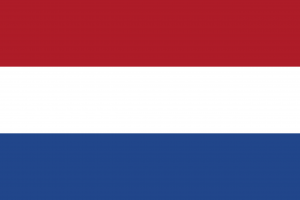Language/Dutch/Grammar/How-to-Use-Be
Hi Dutch learners! 😊
In this lesson, we will focus on how to use the verb "be" in Dutch. We will cover its conjugation, usage and some cultural tips. Don't forget that by improving your Dutch Dutch Grammar, you will be able to express yourself better and communicate more effectively with native speakers. To reinforce what you learn, don't hesitate to use Polyglot Club and find native speakers to practice and ask them any questions! 😎
"Be" Conjugation[edit | edit source]
In Dutch, the verb "be" is used to indicate existence, status or location. Its conjugations are as follows:
| Subject | Conjugation |
|---|---|
| Ik (I) | ben |
| Jij/U (You - singular) | bent |
| Hij/Zij/Het (He/She/It) | is |
| Wij (We) | zijn |
| Jullie (You - plural) | zijn |
| Zij (They) | zijn |
Notice that the conjugation of the verb depends on the tense, but in Dutch, it also depends on the subject. For instance, "Ik ben" means "I am" and "Hij is" means "He is".
Now, let's move to some usage examples.
"Be" Usage[edit | edit source]
Nationality and Profession[edit | edit source]
To talk about someone's nationality in Dutch, we use the verb "zijn" (to be) instead of "hebben" (to have) like in English. For example:
- Ik ben Nederlands. (I am Dutch.)
- Zij is Spaans. (She is Spanish.)
- Wij zijn Duitsers. (We are Germans.)
Similarly, to talk about someone's profession, we use the verb "zijn" (to be) instead of "werken" (to work) like in English. Here are some examples:
- Ik ben leraar. (I am a teacher.)
- Hij is advocaat. (He is a lawyer.)
- Zij is dokter. (She is a doctor.)
Location[edit | edit source]
To talk about someone's location in Dutch, we use the preposition "in" followed by the name of the city, country or place. Here are some examples:
- Ik ben in Amsterdam. (I am in Amsterdam.)
- Zij is in Nederland. (She is in the Netherlands.)
- Wij zijn op het strand. (We are at the beach.)
Cultural Tip[edit | edit source]
In Dutch, people tend to use the verb "zijn" (to be) more often than in English, especially when talking about someone's age. For instance, instead of saying "Ik ben 25 jaar oud" (I am 25 years old), Dutch people tend to say "Ik ben 25 jaar" (I am 25 years).
Now, let's practice what we learned with a dialogue.
Person 1: Hallo, hoe gaat het? (Hello, how are you?) Person 2: Het gaat goed, bedankt! Ik ben Nederlands, en jij? (I'm fine, thanks! I'm Dutch, and you?) Person 1: Ik ben Amerikaans. Waar ben je vandaan? (I'm American. Where are you from?) Person 2: Ik ben uit Amsterdam. (I'm from Amsterdam.)
Great job! Now, let's move to some exceptions.
"Be" Exceptions[edit | edit source]
In Dutch, some verbs are followed by the preposition "aan" instead of "in" to indicate a location. Here are some examples:
- Ik ben aan het strand. (I am at the beach.)
- Zij is aan het werk. (She is at work.)
- Wij zijn aan de universiteit. (We are at the university.)
Notice that the form "aan het" is used with a noun preceded by "de" and the form "op het" is used with a noun preceded by "het". Here is an example:
- Ik ben op het station. (I am at the train station.)
Conclusion[edit | edit source]
In this lesson, we learned how to use the verb "be" in Dutch. We covered its conjugation, usage and some exceptions. Remember to practice what you learned with native speakers, and don't hesitate to ask questions on Polyglot Club. 😎
➡ If you have any questions, please ask them in the comments section below.
➡ Feel free to edit this wiki page if you think it can be improved. 😎
Congratulations on finishing this lesson! Explore these related pages to keep learning: Nouns, The Accusative Case in Dutch, Indefinite Articles in Dutch & The Locative Case in Dutch.

